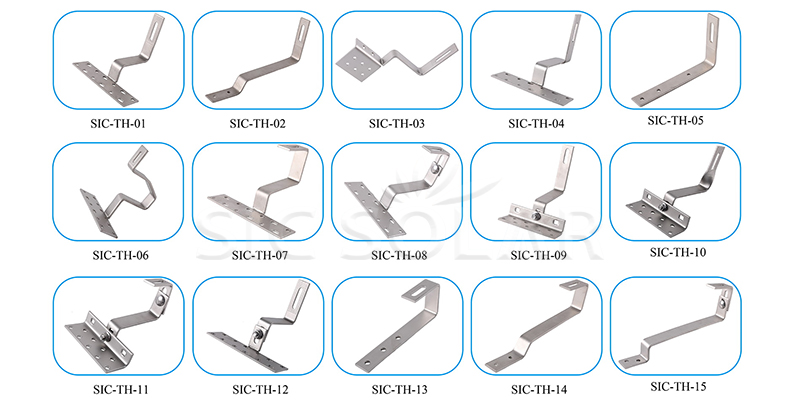Installing solar panels on sloped or tiled roofs is a popular way to tap into renewable energy, and solar roof hooks play a pivotal role in this process. These hooks form the base for securing the rails that hold the solar panels in place, ensuring they’re safely and accurately mounted for peak energy output.
Step-by-Step Guide to Installing Solar Roof Hooks
Step 1: Preparation and Safety First Before you begin, gather your tools and materials, and prioritize safety:
- Safety Gear: Equip yourself with safety goggles, gloves, and non-slip shoes. Roof work can be hazardous, especially on steep or high roofs.
- Tools and Materials: You’ll need a drill, screwdriver, measuring tape, hammer, solar roof hooks, suitable fasteners, and a level.
- Weather Conditions: Opt for a dry, clear day to avoid slippery conditions and ensure safe working.
Step 2: Assess the Roof Understand your roof’s structure before installation:
- Roof Type: Solar roof hooks are ideal for shingle, tile, or metal roofs. Ensure you have the right hooks for your material.
- Positioning: Decide on the panel location, typically the southern side of the roof for optimal sun exposure in the Northern Hemisphere, adjusting for obstructions or shading.
- Stud Locations: Identify the rafters or trusses under the roofing material, as hooks need to be anchored into the rafters for a secure mount.
Step 3: Mark the Positions for the Hooks Determine the best placement for your solar panels:
- Use a Measuring Tape: Measure and mark where each roof hook will go, spacing them evenly for balanced support.
- Mark the Rafters: Locate the rafters with a stud finder or by tapping the roof, marking the center of each rafter along the line for the hooks.
Step 4: Install the Solar Roof Hooks With the roof prepared, install the solar roof hooks:
- Drill Pilot Holes: Make pilot holes at the marked spots, ensuring they align with the rafters for a strong anchor.
- Attach the Hooks: Position the hooks over the pilot holes and secure them with fasteners. Ensure they’re level and firmly attached to the rafters. SIC Solar’s hooks are designed for durability and easy installation, flush against the roof to prevent water infiltration.
Step 5: Verify Alignment and Tightness After installation, check the hooks:
- Check Alignment: Use a level to ensure hooks are properly aligned; misalignment can affect the stability of the solar panel system.
- Tighten the Hooks: Recheck all fasteners to ensure they’re tight; loose fasteners can lead to instability and potential damage.
Step 6: Install Mounting Rails and Panels With the hooks secured, proceed with the rest of the installation:
- Mounting Rails: Attach the rails to the roof hooks, which will serve as the base for your solar panels, secured with clamps.
- Attach Solar Panels: Position the panels onto the rails and secure them tightly with solar panel clamps.
Step 7: Check for Leaks and Ensure Waterproofing After the panels are mounted, inspect for any gaps or leaks:
- Ensure the roof hooks are properly sealed with roofing sealant or flashing tape to prevent water entry and potential damage.
Why Choose SIC Solar Roof Hooks?
For long-term performance and durability, high-quality mounting solutions like SIC Solar’s roof hooks are essential:
- Versatility: Compatible with various roofing materials.
- Durability: Made from corrosion-resistant materials for longevity.
- Ease of Installation: Designed for quick and secure attachment.
- Waterproofing: Designed to prevent water penetration, keeping your roof intact.

Installing solar roof hooks is a critical step in setting up your solar panel system. By following these steps and using reliable components from SIC Solar, you can ensure your solar panels are securely mounted and performing at their best, providing renewable energy for years to come. Proper installation also protects your roof from damage and ensures the longevity of your solar power system, regardless of whether you have a shingle, tile, or metal roof. The right mounting system is key to getting the most out of your solar investment.